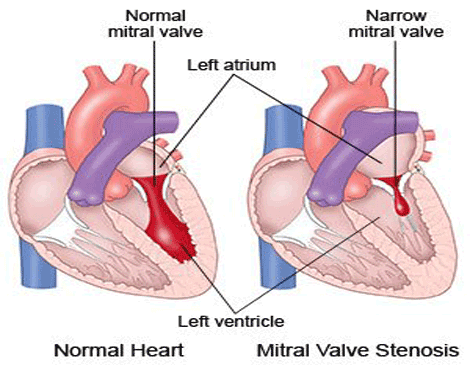Mitral Valve Stenosis
How do heart valves function?
Before leaving each chamber of the heart, blood flows through a valve. Within your heart, there are four valves. The heart valves ensure that blood only flows in one direction through your heart.
The mitral valve is located between the heart's left upper and lower chambers. It consists of two leaflets that open and close like a double door.
What is Mitral Stenosis?
As per Best Heart Specialist in Delhi Stenosis refers to the narrowing of a passageway, such as a heart valve. Stenosis of the mitral valve restricts blood flow from the left atrium to the left ventricle. This can result in a buildup of blood and fluid in the lungs.
Mitral Stenosis typically develops many years after a person has had rheumatic fever, though many patients with Mitral Stenosis have no recollection of ever having the illness.
What are the Signs and Symptoms?
Many Mitral Stenosis symptoms, such as shortness of breath and fatigue, are caused by a buildup of blood in the lungs. Other symptoms of Mitral Stenosis include rapid weight gain, weakness, dizziness, ankle, foot, and/or abdomen swelling (edoema), and/or heart palpitations (irregular heartbeat).

What factors contribute to Mitral Stenosis?
As explained by Best Cardiologist in Max Hospital Saket Mitral Stenosis typically develops many years after a person has had rheumatic fever, though many patients with Mitral Stenosis have no recollection of ever having the illness. The valve becomes inflamed during rheumatic fever. The inflamed valve's leaflets stick together and become scarred, rigid, and thickened over time, limiting its ability to open completely.
What is the treatment for Mitral Valve Stenosis?
According to Dr. Rajiv Agarwal one of the best heart doctors in max hospital saket, if the symptoms are mild, medication can be used to treat valve stenosis. When medications fail to relieve symptoms, a balloon valvotomy or surgical valve repair or replacement is performed.
Following the Balloon Valvuloplasty:
The patient will be taken to the recovery room for observation following the procedure. After the procedure, the patient may remain flat in bed for several hours. Bed rest can last anywhere from 2 to 6 hours, depending on the patient's condition. The doctor instructs the patient on how to resume normal activities following this complicated surgical procedure.
The patient may be given medication to relieve pain or discomfort caused by the insertion site, or he or she may be placed on bed rest for an extended period of time. Encouraged to drink water and other fluids to help flush the patient's body, and after the balloon valvuloplasty, the patient may resume his or her normal diet unless the doctor does not recommend it.
The patient may get out of bed after the specified period of bed rest. When the patient first gets up, the nurse assists and may check blood pressure. They must give some instructions when the patient slowly gets out of bed to avoid dizziness from the prolonged bed rest.
To book an appointment with the or in Delhi - Dr. Rajiv Agarwal is one of the with more than 35 years of experience in the field of non-invasive and invasive cardiology can book the appointment through https://www.drrajivagarwal.in

